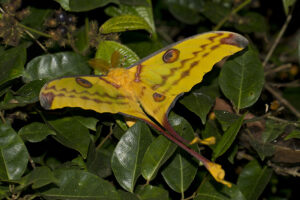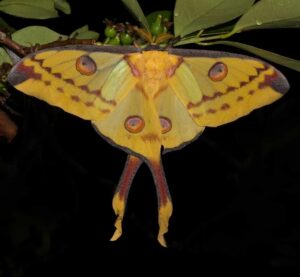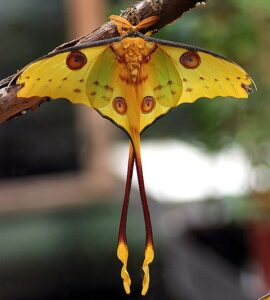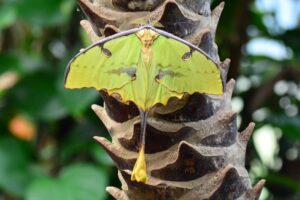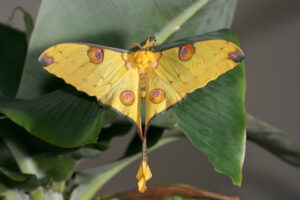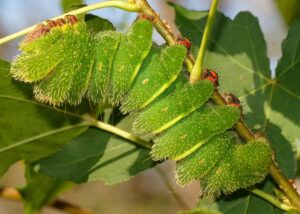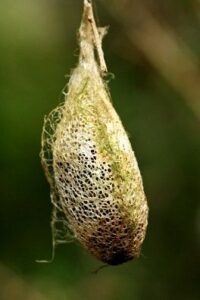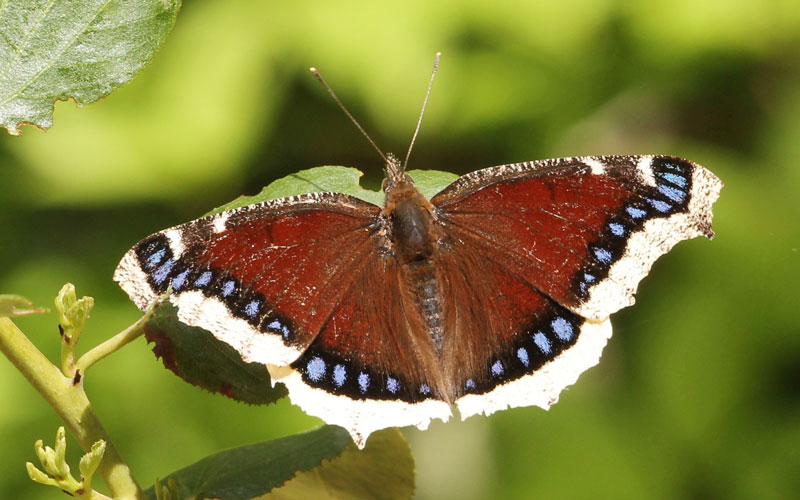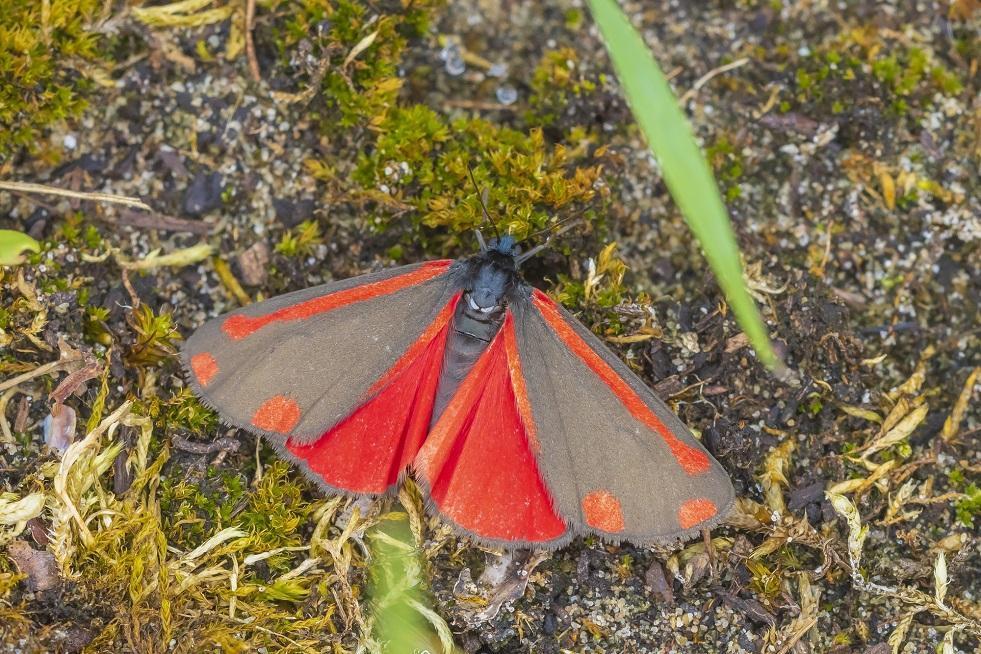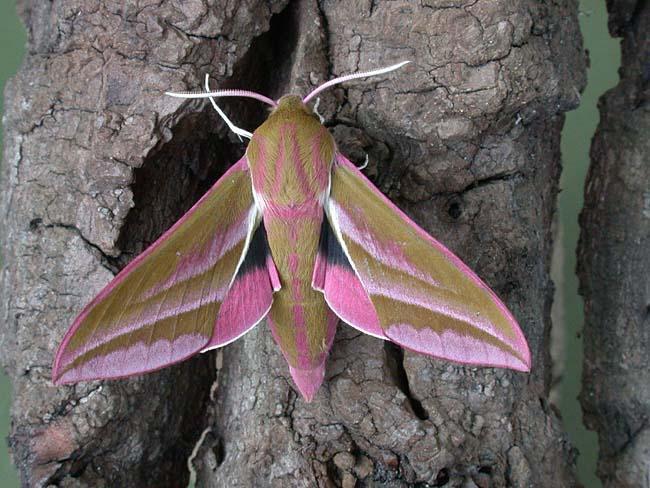Comet Moth (Argema mittrei)
Updated on
17/11/2022The comet moth is a native of the rainforests of Madagascar. Hence it is also called the Madagascan moon moth. Félix Édouard Guérin-Méneville first described the species in 1847. Habitat loss has endangered it in the wild. But it has been bred in captivity. The comet moth flies at night.
Scientific Classification
- Class:Insecta
- Order:Lepidoptera
- Family:Saturniidae
- Genus:Argema
- Species:A. mittrei
Conservation Status
Description
The wings of the comet moths are vibrant in red and yellow with intricate patterns that help them camouflage during the day. The species exhibits sexual dimorphism, with the females having more rounded wings. The males have long, feathery antennas for sensing the locations of the females, which have thin antennas. With the males having a wingspan of 7.9 inches (20 cm) and a tail span of 5.9 inches (15 cm), the species is one of the world’s biggest silk moths.
Distribution: Madagascar.
Habitat: Rainforests
Do They Bite/Sting: No.
Lifespan: 4-5 days.
Predators: Bats.
Behavior and Characteristics
Diet
The caterpillars aggressively eat the leaves of eucalyptus plants found in their native range. They may also feed on plants in the Weinmannia and Eugenia genera. They also prefer plants like Weinmannia eriocampa, Sclerocarya caffra, and Uapaca species. If these are unavailable, they may eat Rhus cotinus, and Pistacia terebinthus.
Defense Mechanism
The wings of the moths have large eyespots that give the impression of a big, dangerous animal that its predators might fear to attack. Plus, the comet moth can absorb ultrasound that presents a dampened echo to bats (that use echolocation for foraging), rendering it invisible to its predator. Other defensive methods used by it are aposematism, crypsis, or mimicry. Its long, bright, red, and yellow tail is also used for defense.
Life Cycle
1. Egg Stage
The female lays 100-150 eggs.
2. Larva Stage
The larva or caterpillar spins a natural silk cocoon. This stage lasts for around two months.
3. Pupa Stage
The pupa is housed in a grayish-white cocoon resembling a sac with a small, rough opening at one end. Drainage holes in the cocoon allow rainwater to escape, saving the pupa from drowning.
4. Adult Stage
Lacking a mouth and gut, the adult cannot feed. Its only purpose is to mate in its short lifespan.
Comparison with Similar Species
Luna Moth
The Luna moth (Actias luna) looks similar to the Madagascan moon moth as both have long, extended tail wings and four round eyespots. But the Luna moth is green while the comet moth is yellow.
Source
madamagazine.com, tumblr.com, media.kidadl.com, fbcdn.net, a-z-animals.com, i.pinimg.com




